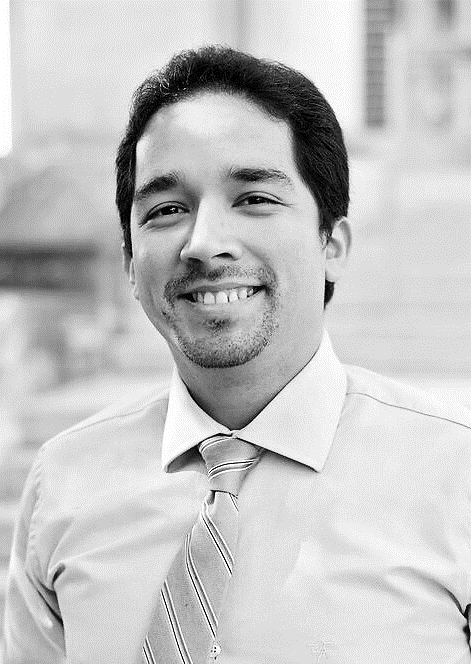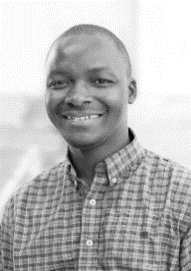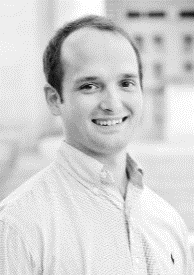Vanderbilt Master of Public Health (MPH) students presented their practicum experiences at the 2018 Public Health Practicum Colloquium on January 26. Through posters and discussion, students presented their practicum experiences working and learning in public health organizations and settings. Click here to view photos of the 2018 colloquium, and read below for practicum descriptions from MPH candidates in the Global Health track.
 Sade Arinze, M.D.
Sade Arinze, M.D.
M.P.H. Candidate, Global Health Track
Practicum Site: Vanderbilt Comprehensive Care Clinic, Nashville, TN
Practicum Site Supervisor: Robertson Nash, Ph.D., MBA
Vanderbilt Comprehensive Care Clinic: PATHways Program
Program Purpose: The Vanderbilt Comprehensive Care Clinic (VCCC) is a medical home for persons living with the human immunodeficiency virus (HIV). While majority of VCCC patients are engaged in care and maintain virologic suppression, a small percentage of patients are lost to follow-up. These patients pose significant public health challenges because of the possibility of transmission of HIV within the community. The PATHways program was established to address the needs of this high-risk population.
Project Design: My work at the PATHways clinic involved attendance at weekly Complex Patients at Risk (CPR) meetings, literature review for the optimal tools to assess health literacy and the efficacy of substance abuse treatment in HIV, and data analysis of the VCCC panel of patients that reside in Rutherford county. The objective of the Rutherford county project was to determine the frequency of missed clinic appointments and virologic status of this cohort of patients within the preceding 3 years. The overarching goal was to assess if distance to clinic played a major role in missed clinic appointments and virologic suppression, and serve as justification to establish a satellite clinic in Rutherford county.
Outcomes: Of the 3472 active patients at the VCCC, 307 live in Rutherford county. 57 of the 307 patients (18.6%) had detectable viral loads, while 81.4% were virologically suppressed. The median percentage of no-show appointments was 10% [interquartile range: 1.6-23.5]. Majority of these missed visits were for various types of providers including physicians, nurse practitioners, social work, nutrition, and psychiatry.
Lessons Learned: Although the data did not justify establishing a satellite clinic in Rutherford county, resources from the PATHways clinic should be focused on addressing the ongoing medical, social, and psychiatric needs of those patients at risk of being lost to follow-up.

Beto Arriola Vigo, M.D.
M.P.H. Candidate, Global Health Track
Practicum Site: Universidad Peruana Cayetano Heredia, Lima, Peru
Practicum Site Supervisor: Francisco Diez-Canseco, M.P.H.
Building Capacity in Education for Psychiatry Trainees: Implementation of an International Rotation Between Vanderbilt University Medical Center and Universidad Peruana Cayetano Heredia in Lima, Peru
Purpose: Capacity building strategies through the development of collaborative agreements among academic institutions in high-, middle-, and low-income countries are effective approaches to improve education in medicine and public health. However, several institutions have utilized similar strategies, there is scarce initiatives on its implementation among non-surgical specialties such as mental health. Thus, this project aims to develop an inter-institutional agreement between the Department of Psychiatry and Behavioral Sciences at Vanderbilt University Medical Center (VUMC) and the Universidad Peruana Cayetano Heredia (UPCH) in Lima, Peru.
Design: This project sets the ground for the implementation of a 4-week international rotation for psychiatry trainees from VUMC and UPCH. The proposed activities will provide psychiatry trainees with experience in Global Mental Health through clinical rotations in tertiary and community mental health centers as well as academic activities at UPCH. Simultaneously, Peruvian psychiatry residents will gain skills in advanced subspecialty psychiatric care through predominantly clinical and research activities at VUMC. The development of an inter-institutional agreement (Program Letter of Agreement: PLA) has entailed coordinating with the parties involved including psychiatry residency program directors, and leadership teams.
Outcomes: A final draft of Program Letter of Agreement (PLA) and a potential schedule for psychiatry trainees will be submitted to the psychiatry residency leadership teams of VUMC and UPCH for final approval. Subsequently, the characteristics of this international rotation will be presented to psychiatry trainees in order to start recruiting potential participants.
Lessons Learned: The different levels of supervision and approval steps necessary to implement an inter-institutional agreement widely vary among different institutions, and understanding each step could result on faster implementation of such programs. Capacity building strategies through the development of inter-institutional agreements greatly benefit academic institutions as they ultimately enrich the education of residents and fellows and increase diversity in the departments involved.

Birdie Hutton
M.P.H. Candidate, Global Health Track
Practicum Site: Central American Medical Outreach, Santa Rosa de Copan, Honduras
Practicum Site Supervisors: Jose Bautista, Ricardo Dominguez, M.D.
Health System Strengthening at the Central American Medical Outreach Foundation
Project Purpose: Central American Medical Outreach Foundation (CAMO) is a non-governmental organization located in western Honduras that provides educational, medical and community development services. For my practicum, I helped create an extensive monitoring and evaluation (M&E) system for the nursing capacitation program at a local hospital. Working at CAMO exposed me to multiple aspects of public health and allow me to experience the challenges of working within the health system of a developing country.
Design of Project: The nursing capacitation program for the Hospital de Occidente in Santa Rosa de Copan, Honduras, is supported by the CAMO Foundation. In order to study and track the impact of this program, I developed an M&E system through conducting a literature review, consulting with stakeholders, leading a focus group and analyzing hospital data-flow. I then wrote a protocol for future grants and determined the base-line for key indicators.
Final Practicum Products: I developed a protocol that described the development, implementation and primary analysis of the proposed M&E system to best capture the impact of CAMO’s nursing capacitation program. This M&E system will show stakeholders the impact of the nursing capacitation program, highlight areas for improvement, and serve as a justification for continued funding. I also actively assisted when CAMO conducted medical brigades in communities that lacked running water and electricity. I gave out new baby kits, toothbrushes and clothing donations, as well as helped with the patient charts for the audiometric and gynecological services. Through these endeavors I have reaffirmed my interest in becoming an active, committed advocator for the health of underserved populations in my future.

Salesio Macuacua, M.D.
M.P.H. Candidate, Global Health Track
Practicum Site: Barretos Cancer Hospital, Barretos, Brazil
Practicum Site Supervisors: José Humberto Tavares, Guerreiro Fregnani, M.D., Ph.D.
Training and Research Institute and Clinical Research Unit in Barretos Cancer Hospital
Project purpose: Barretos Cancer Hospital (BCH) has a mission to promote health through qualified and humanized medical care in oncology. It accomplishes this nationally for patients in the Unified Health System through prevention, teaching and research programs. The Training and Research Institute and the Clinical Research Unit are the departments responsible for research activities within the BCH. For my practicum, I was placed within these departments and sought to explore how clinical research is conducted in advanced institution located in a country with similar epidemiological profile as Mozambique where I am professionally based.
Methods: As an intern in the Training and Research departments, my activities were divided in order to maximize experiences from working with different teams. Every week I worked closely with the study team responsible of data collection and follow up of study participants. Activities included discussion of design and implementation of study protocols along with participation in study regulation processes. I participated in Institutional Review Board weekly meetings and their administrative activities. In addition, I attended a series of postgraduate studies including all relevant classes, presentations and discussions.
Results: BCH has contributed to the improvement in the quality of care in oncology by generating scientific evidence. My time in BHC provided me with hands-on experience in a middle-income country and broadened my knowledge base in design and implementation of research projects, especially those activities related to clinical trials.
Conclusion: Successful implementation of research projects depends on how well the investigator can coordinate with other professionals and skillsets to function as a team toward accomplishing their overall goals.

Juanita Prieto Garcia, M.D.
M.P.H. Candidate, Global Health Track
Practicum Site: Tennessee Department of Health, Nashville, TN
Site Supervisors: Carolina Clark, M.D., Morgan McDonald, M.D.
Practicum at the Tennessee Department of Health Maternal and Child Health Division: A Direct Experience with Public Health
The mission of Tennessee Department of Health (TDH) is to “Protect, Promote and improve the health and prosperity of people in Tennessee.” TDH’s Family Health and Wellness Division is comprised of Maternal and Child Health (MCH), Special Supplemental Nutrition, and Chronic Disease and Health Promotion programs. The MCH division works in four main areas, the Zika Surveillance, Lead Poisoning Prevention, Newborn Screening and Lysosomal Storage Diseases Registry.
My primary objective was to be exposed to a governmental agency and learn how public health is achieved at a larger scale and for a local population.
I was placed in MCH Team as an intern for the Medical Consulting Team where I learned the dynamics of the division, reviewed literature for the appropriate design of the programs and developed survey tools using Redcap.
The goals of the MCH program are to reach as many people with the prevention and promotion of health programs, unify the birth registry in the state hospitals and associated health care institutions, and to screen infants shortly after birth for conditions that are treatable. The MCH Division structure relies on four levels of service, Direct, Enabling, Population-based and Infrastructure; the dynamics between these four levels ensured the viability of the programs.
The most important academic outcomes during my practicum was the launching of the Lysosomal Storage Disease Registry. Its’ success was measured by the distribution of information by mail and through the TDH website and to all health centers, as well as the increase of patient registration in medical practices.
The ongoing challenge that TDH faces is the capacity of reach out to all the population including immigrants and refugees, I believe due to our current political climate, many refugees and immigrants purposely ignore health care necessities because of fear, which poses an ongoing problem for public health.

Joey Starnes
M.D./M.P.H. Candidate, Global Health Track
Practicum Site: World Health Organization Network, Geneva, Switzerland
Practicum Site Supervisor: Isabelle Wachsmuth, M.Sc., M.P.H.
Evidence-Based Policy: Innovation for Integrated People-Centered Health Services
Project Purpose: More than 400 million people lack access to services that could be provided by high-quality primary care (1), and when care is available it is often fragmented and of variable quality (2). In response to these health systems challenges, the World Health Assembly adopted the Framework on Integrated People-Centred Health Services (IPCHS) in 2016 (3). As requested by the Framework’s supporting resolution, the World Health Organization is developing a series of technical documents to support its implementation at regional and country levels. This project aimed to create an evidence brief for policymakers identifying policy options for fostering the innovation needed to implement this framework.
Structure of Project: This policy brief was developed by an interdisciplinary team in the Service Delivery and Safety Department. It is targeted at policymakers and their staff at the regional and country level. It describes the concepts and determinants of innovation, identifies the potential of innovation to address health system challenges, discusses best practices and case studies, and aggregates these into policy recommendations.
Outcome and Products: The final product was the policy brief, which recommends three policy options:
Implementing transformational and distributed leadership to foster innovation across health sectors
Promoting social solidarity economy with innovative solutions
Optimizing existing infrastructure with social and technological innovations.
Further success of the project will be measured by the engagement of policymakers and implementation of recommended policies. This will be implemented and monitored by the Service Delivery and Safety Department.
Lessons Learned: The brief must now undergo internal and external expert review prior to publication and use. Moving forward, it will inform and facilitate high-level policy discussions about health innovation systems and play a role in ongoing efforts to implement IPCHS. It will also inform more general policy briefs and efforts around universal health coverage.
References:
1. World Health Organization, World Bank Group. Tracking universal health coverage: first global monitoring report. Geneva: World Health Organization; 2015.
2. Pan American Health Organization. Integrated Health Service Delivery Networks: Concepts, Policy Options and a Road Map for Implementation in the Americas [Internet]. WHO/PAHO; 2011 [cited 2017 Nov 29]. Available from: http://iris.paho.org/xmlui/handle/123456789/31216
3. Framework on integrated, people-centred health services. A69/39 Apr 15, 2016. Sixty-ninth World Health Assembly.